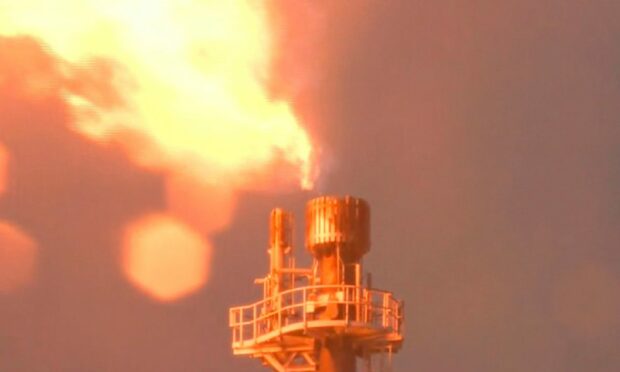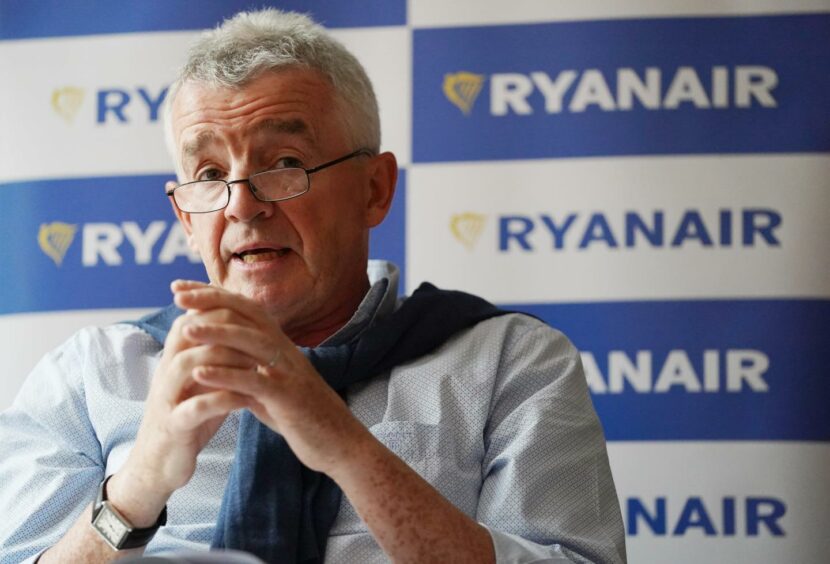A barrel of Brent Crude has continued its meteoric rise and could reach beyond $130, an analyst has predicted.
Oil hit a record not seen in 10 years during the day, with Brent crude pushing towards 120 dollars per barrel, but by the end of the day it had given back some of those gains, at 113.09 dollars.
Rystad Energy CEO Jarand Rystad said sanctions imposed in an effort to punish Russia for its invasion of Ukraine will soon impact the rogue state’s exports, but also push up global prices.
He said: “We expect that Russian oil exports will plunge by 1 million bpd (barrels per day) from the indirect impact of sanctions and voluntary actions by companies.
“Oil prices are likely to continue to climb – potentially beyond $130 per barrel.”
Cost impact
Brent has jumped by about 37% in the past 30 days.
The cost of gas in the UK also hit its second highest level on Wednesday.
Energy prices for millions of households could rise by another £1,000 by October, the boss of the industry body warned.
Emma Pinchbeck, chief executive of Energy UK, said the average household might be forced to pay between £2,500 and £3,000 per year for their supplies.
It would mean energy prices more than doubling from the current cap, which is set at £1,277 per year for the average household. The cap is already scheduled to rise to £1,971 from the beginning of April.
However, the predictions are very early and based on today’s data, so are likely to change before the October price cap is announced this summer.
Meanwhile, the average cost of a litre of petrol at UK forecourts was 151.67p on Tuesday, up from 151.16p on Monday, according to from data firm Experian Catalist.
As well as rising prices on fuel forecourts and energy tariffs as a result of the crisis, Britons are also set to see food costs ramp up.
Russia’s invasion has heaped yet more pressure on agricultural commodity prices in recent days.
Wheat and corn prices rose more than 5% per bushel and are already up more than 20% so far this year, with Ukraine, often dubbed the “breadbasket of Europe” being a key exporter of both crops.
Russian oil and gas still flowing
The Biden administration has taken aim at Russia’s oil refining sector with new export curbs and targeted Belarus with sweeping new export restrictions.
But Washington has, so far, stopped short of targeting Russia’s oil and gas exports.
Sanctions have so far excluded energy shipments from Russia, the world’s largest gas and second-largest oil exporter.
Despite the ongoing war in Ukraine physical deliveries of gas from Russia to Europe through its various pipelines have so far remained largely unchanged.
But there are concerns in the market that stricter sanctions could start to impact on the energy market, and with Russia’s financial system heavily restricted, traders are reluctant to engage.
Higher for longer
Europe relies on Russia for about a third of its gas, and any disruption could keep prices high for longer, threatening to worsen a cost of living crisis facing many.
Not all countries get supply directly from Russia, but if countries such as Germany, the biggest consumer of Russian gas, receive less from Russia, they must replace this from elsewhere, for instance, Norway, which has a knock-on effect on available gas for other countries.
Earlier this week, the Westminster Government banned any Russian vessel from docking in the UK, including those carrying liquified natural gas used to generate power stations.
The International Energy Agency said global energy security is under threat, as it released more oil into the market in an attempt to calm prices.
Ryanair boss Michael O’Leary said the West must work on getting oil prices down.
Speaking to Sky News on Wednesday, he said: “We would still believe, hopefully, that the Ukrainian situation will be resolved in favour of Ukraine in the near to short term, but there’s no doubt that if oil prices remain high, around 100 dollars a barrel, we are going to see a dramatic increase in supply.
“The Iranians are talking to the Americans about resolving the nuclear discussions. They’re already loading up tankers to export oil.
“The most important thing that we in the West can do is drive up oil production, because what hits Russia hardest is low oil prices and low gas prices.”


